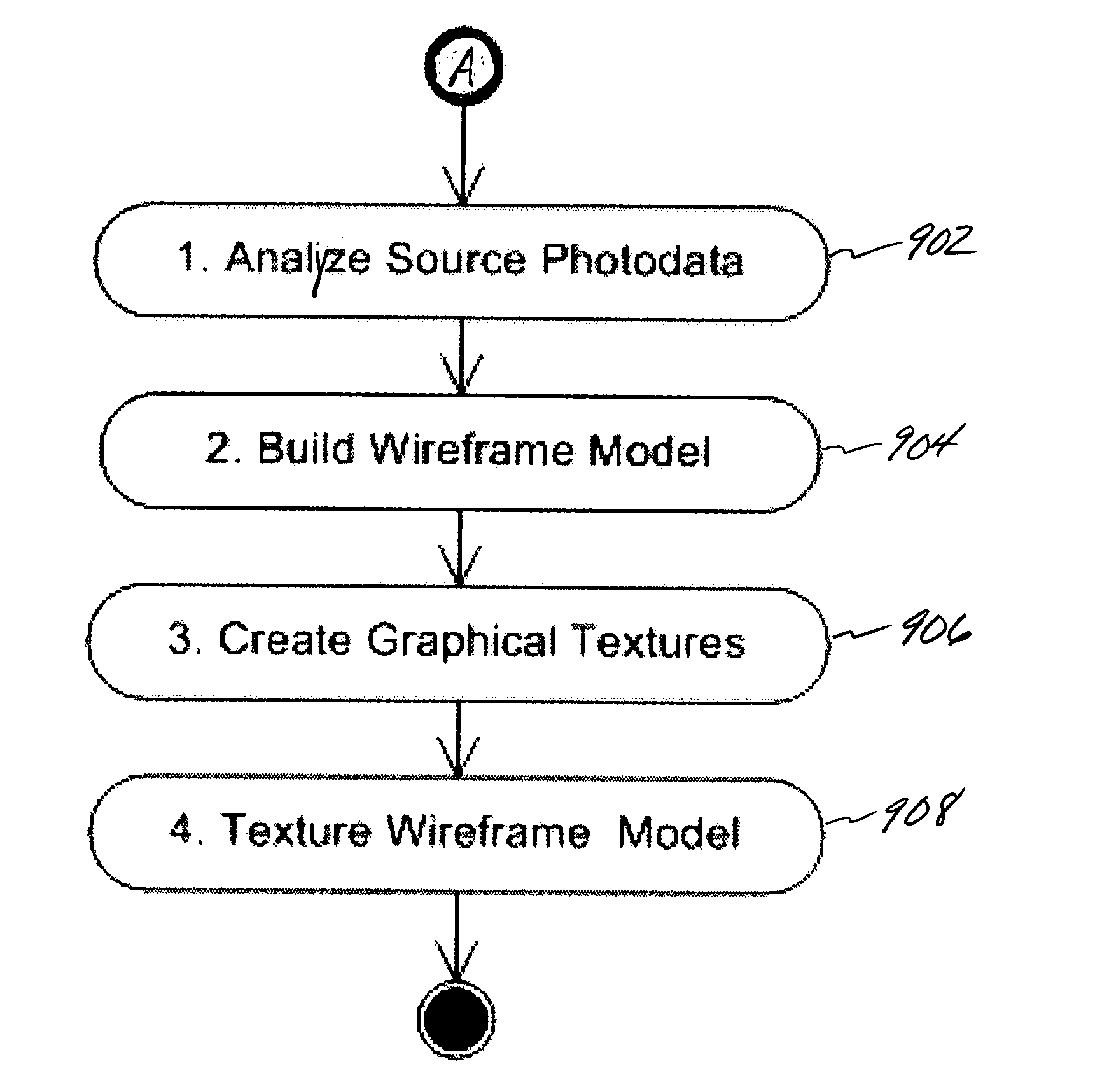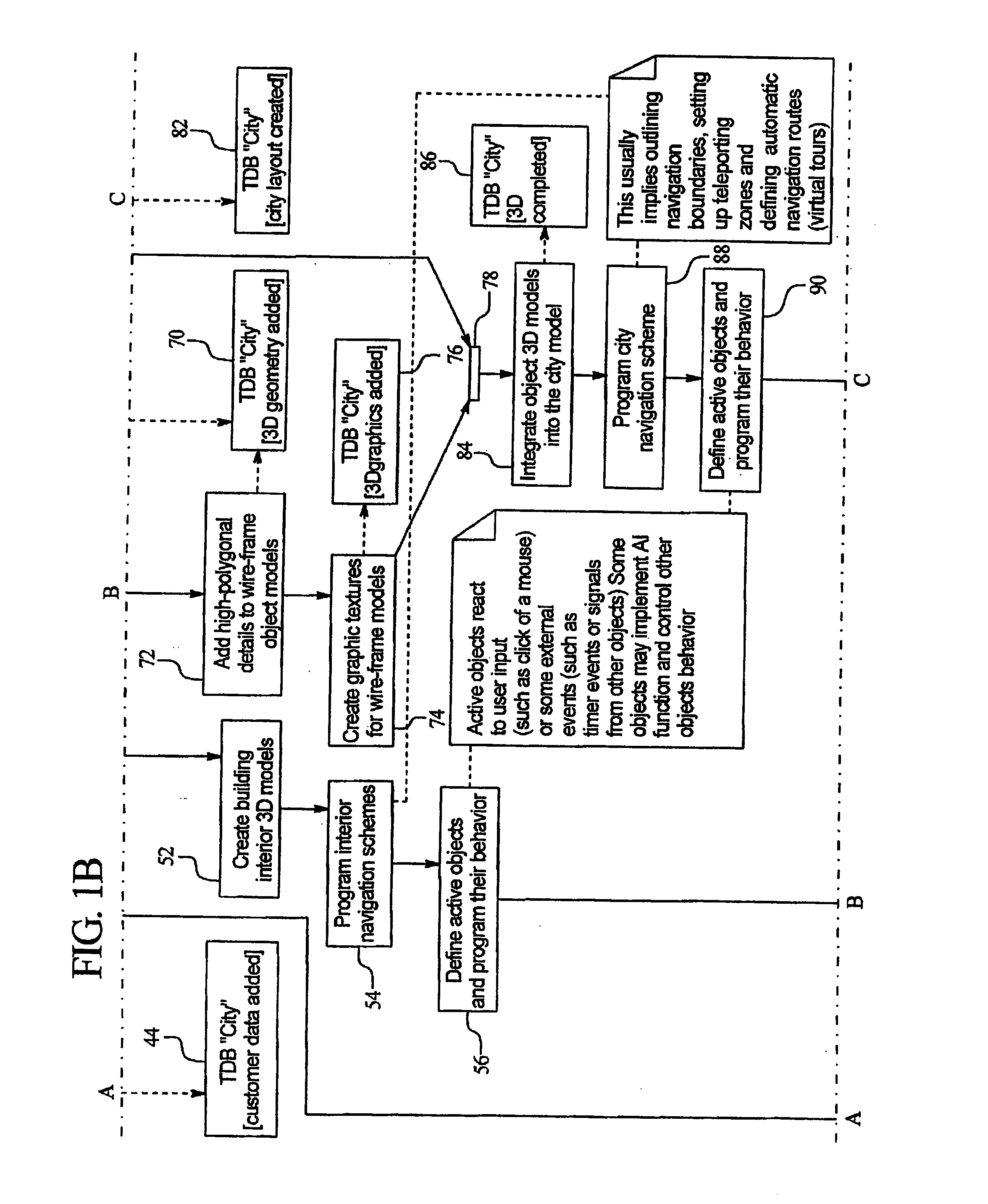System and method for minimizing the amount of data necessary to create a virtual three-dimensional environment
a three-dimensional environment and data collection technology, applied in the field of apparatus and methods for creating a virtual three-dimensional environment, can solve the problems of many virtual models not having a corresponding physical model, not having actual physical data available, and many virtual models not having corresponding physical models, so as to minimize the number of photographs necessary, minimize the amount of data collection, and minimize the effect of data collection
- Summary
- Abstract
- Description
- Claims
- Application Information
AI Technical Summary
Benefits of technology
Problems solved by technology
Method used
Image
Examples
Embodiment Construction
Creating the Virtual Reality Three-Dimensional Environment
[0072] Referring now to FIG. 1, a flowchart generally illustrates one embodiment of a method for creating a virtual three-dimensional environment in accordance with the present invention. In this embodiment, the virtual three-dimensional environment is a virtual three-dimensional model of an actual city.
[0073] In this embodiment, the flowchart shown in FIG. 1 is variation of a Unified Modeling Language™ (UML) Activity Diagram. It should be appreciated that UML is well known in the computer field as a language for specifying, visualizing, constructing, and documenting software systems and the like and that it is used in part to simplify software and related design processes. In addition, UML diagrams can be used for database design, thereby allowing, for example, a business and an application team who are using UML for their designs to share a common language and to communicate with a database team. In this regard, UML can b...
PUM
 Login to View More
Login to View More Abstract
Description
Claims
Application Information
 Login to View More
Login to View More - R&D
- Intellectual Property
- Life Sciences
- Materials
- Tech Scout
- Unparalleled Data Quality
- Higher Quality Content
- 60% Fewer Hallucinations
Browse by: Latest US Patents, China's latest patents, Technical Efficacy Thesaurus, Application Domain, Technology Topic, Popular Technical Reports.
© 2025 PatSnap. All rights reserved.Legal|Privacy policy|Modern Slavery Act Transparency Statement|Sitemap|About US| Contact US: help@patsnap.com



